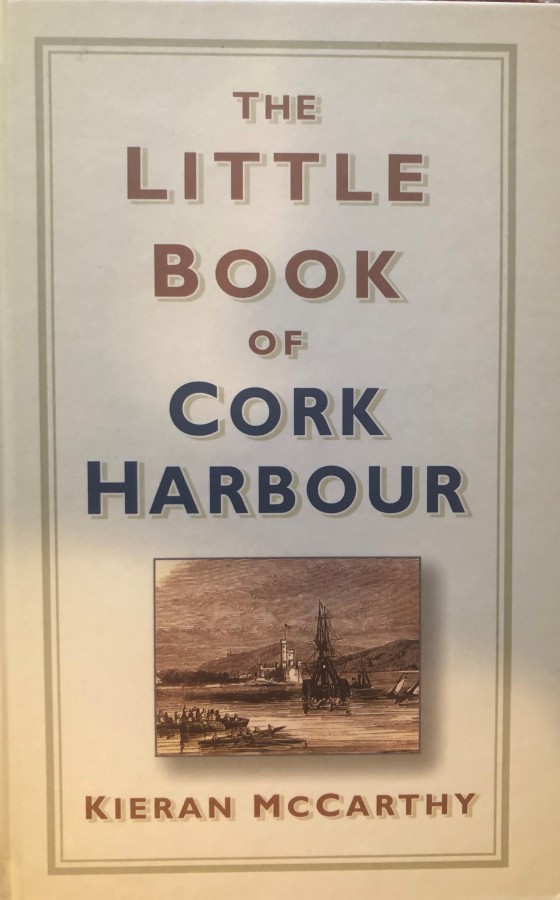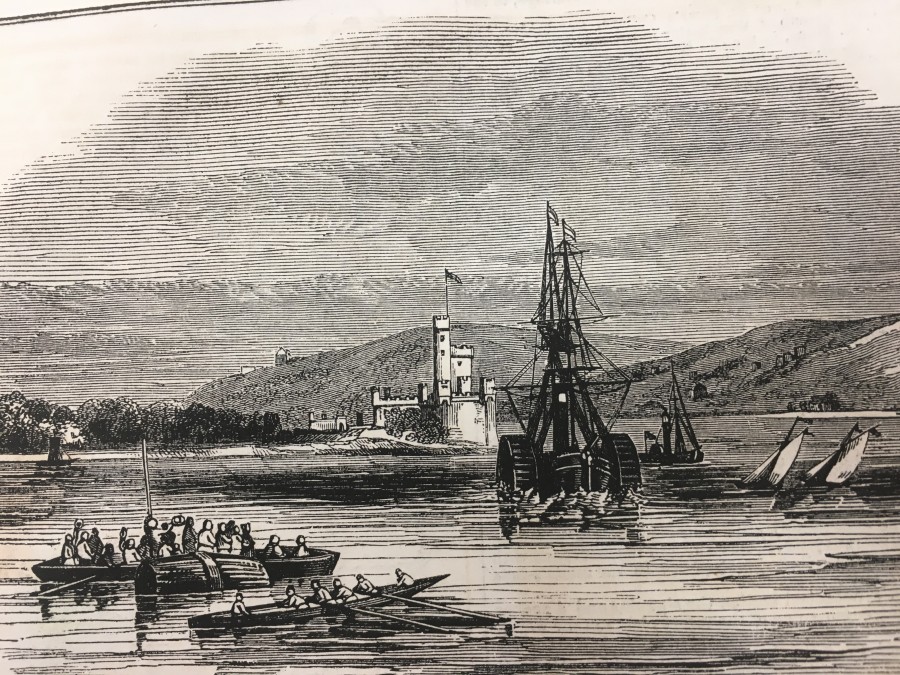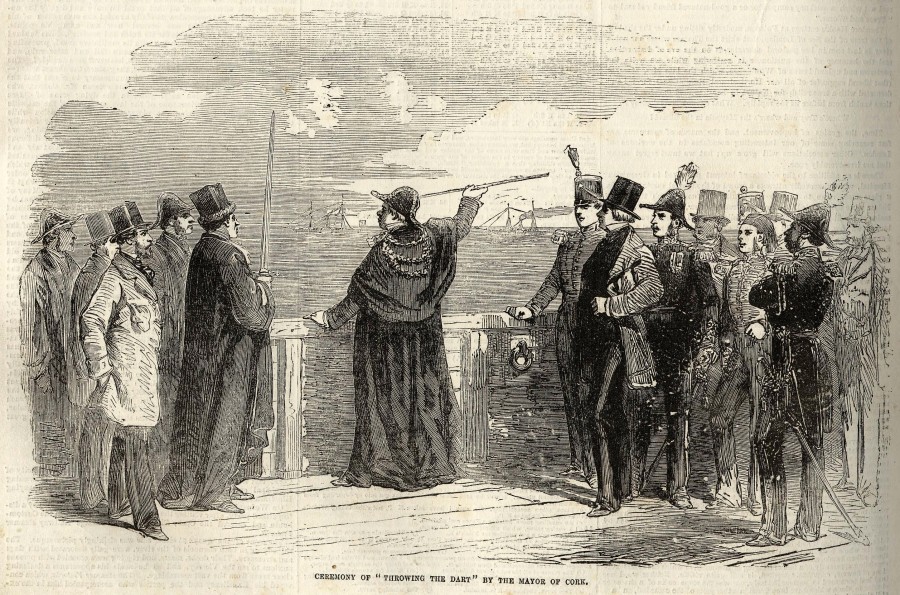Kieran’s Our City, Our Town Article,
Cork Independent, 16 May 2019
The Little Book of Cork Harbour
My new book The Little book of Cork Harbour has recently been published by The History Press (2019). Cork Harbour is a beautiful region of southern Ireland. It possesses a rich complexity of natural and cultural heritage. This is a little book about the myriad of stories within the second largest natural harbour in the world. It follows on from a series of my publications on the River Lee Valley, Cork City and complements the Little Book of Cork (History Press, Ireland, 2015). It is not meant to be a full history of the harbour region but does attempt to bring some of the multitudes of historical threads under one publication. However, each thread is connected to other narratives and each thread is recorded to perhaps bring about future research on a site, person or the heritage of the wider harbour.
The book is based on many hours of fieldwork and also draws on the emerging digitised archive of newspapers from the Irish Newspaper Archive and from the digitalised Archaeological Survey of Ireland’s National Monument’s Service. Both the latter digitised sources more than ever have made reams and reams of unrecorded local history data accessible to the general public.
In Cork Harbour colourful villages provide different textures and cultural landscapes in a sort of cul-de-sac environment, with roads ending at harbours and car parks near coastal cliff faces and quaysides. The villages are scattered around the edges of the harbour, each with their own unique history, all connecting in some way to the greatness of this harbour. Walking along several junctures of fields, one can get the feeling you are at the ‘edge of memory’. There are the ruins of old structures that the tide erodes away. One gets the sense that a memory is about to get swept away by the sea, or that by walking in the footsteps trodden by writers, artists and photographers 100 years ago, one could get carried away by their curiosity.
On any good weather day, there are parts of the region where one can almost drive across its sun kissed mudflats. From the Cork-Midleton dual carriage way you get to appreciate farmer’s attempts of reclamation through the ages and the broad mudflats which serve as a home for international bird habitats. There are sections of the harbour to be viewed from the road, which seem almost forgotten. I am a big fan of the Smith Barry tower house folly, which belonged to Fota House estate and which exists on the edge of the Fota golf course.
For centuries, people have lived, worked, travelled and buried their dead around Cork’s coastal landscapes. The sea has been used a source of food, raw materials, as a means of travel and communications and as a place to build communities. Despite this, the harbour has very distinct localities and communities. Some are connected to each through recreational amenities such as rowing or boating and some exist in their own footprint with a strong sense of pride. Some areas such as Cobh and the military fortifications have been written about frequently by scholars and local historians whilst some prominent sites have no words of history or just a few sentences accorded to their development.
In the new book the section, Archaeology, Antiquities and Ancient Towers explores the myriad of archaeological finds and structures, which survive from the Stone Age to post medieval times. Five thousand years ago, people made their home on the edge of cliffs and beaches surrounding the harbour. In medieval times, they strategically built castles on the ridges overlooking the harbour.
The section, Forts and Fortifications, explores the development of an impressive set of late eighteenth-century forts and nineteenth century coastal defences. All were constructed to protect the interests of merchants and the British Navy in this large and sheltered harbour.
The section, Journeys Through Coastal Villages, takes the reader on an excursion across the harbour through some of the region’s colourful towns. All occupy important positions and embody histories such as native industries, old dockyards, boat construction, market spaces, whiskey making and food granary hubs. Each add their own unique identity in making the DNA of the harbour region.
The sections, Houses, Gentry and Estates and People, Place and Curiosities, respectively are at the heart of the book and highlight some of the myriad of people and personalities who have added to the cultural landscape of the harbour.
The section, Connecting a Harbour, describes the ways the harbour was connected up through the ages, whether that be through roads, bridges, steamships, ferries, or winch driven barges.
The eighth section, Tales of Shipping, attempts to showcase just a cross-section of centuries of shipping, which frequented the harbour; some were mundane acts of mooring and loading up goods and emigrants but some were eventful with stories ranging from convict ships and mutiny to shipwrecks and races against time and the tide.
The section entitled Industrial Harbour details from old brickworks, ship buildings to the Whitegate Oil refinery. Every corner of the harbour has been affected by nineteenth century and twentieth century industries.
The last section Recreation and Tourism notes that despite the industrialisation, there are many corners of the harbour where GAA and rowing can be viewed as well as older cultural nuggets such as old ballrooms and fair grounds. This for me is the appropriate section to end upon. Cork Harbour is a playground of ideas about how we approach our cultural heritage, how were remember and forget it, but most of all how much heritage there is to recover and celebrate.
The Little Book of Cork Harbour (2019) by Kieran McCarthy is published by The History Press and is available in Waterstones, Vibes and Scribes and Easons.
Upcoming Walking Tour:
Saturday 19 May 2019, Douglas and its History, meet in the carpark of Douglas Community Centre, 11am (free, duration: two hours, circuit of village, finishes nearby).
Captions:
997a. Front cover of The Little Book of Cork Harbour (The History Press, 2019) by Kieran McCarthy.
997b. Blackrock Castle, 1843 from Illustrated London News (source Cork City Library).
997c. Throwing the Dart ceremony with Mayor and officials, at the mouth of Cork Harbour, 1855 from Illustrated London News (source Cork City Library).


